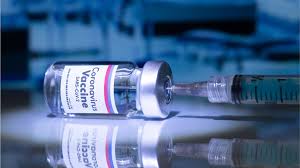Finding The New Normal: The COVID-19 Vaccine

February 12, 2021
Introduction
By now we’ve all heard of the Coronavirus, or COVID-19, and are dealing with its effects in our daily lives. From having to wear masks in public places to travel restrictions and virtual school, there are changes in store for all of us. This can be hard for many people to deal with, even depressing. So luckily for us, things are about to change! Around 2 months ago, Pfizer announced that it had created a new vaccine for COVID-19, with over 90% efficacy! Since then, it has been updated to 95%, and another vaccine (Moderna) has been approved! In addition to this, many more vaccines are in late stages of development. For the first time in a while, the world might be beginning to see the light at the end of the tunnel.
How the Coronavirus has Affected the World
COVID-19 has affected the world in many ways that we couldn’t have even dreamed of. People are required to wear masks in public to stop the spread of germs; schools have gone virtual; you are not allowed to travel to certain places and several stores and companies have seen a lull in business. In fact, a survey conducted by PNAS* between March and April 2020, revealed that 43% of small businesses had temporarily closed, and nearly all of the closures had been due to COVID-19. Many small businesses already struggle, and then you throw a worldwide pandemic into the mix? It’s a nightmare in the making.
This is worrisome because if businesses start to go under, many people will lose their jobs and will not be able to provide for themselves and their families. In fact, in
April 2020, unemployment rates saw an all time high of 14.7% of Americans being unemployed (it has since gone down to 6.7%) and a tremendous amount of people across the globe requested financial assistance for causes related to the virus. Yet another reason to look forward to vaccinations.
The New COVID-19 Vaccine and How It Works
The new covid vaccine is different from other run of the mill shots. It uses a new technology called mRNA (messenger RNA). Most vaccines today (not mRNA) use a weakened version of whatever sickness it protects against, and injects that into our bodies to strengthen the immune system. Whereas mRNA vaccines teach our cells how to make a protein, or even just a piece of protein, that triggers an immune response in our bodies. That immune response creates antibodies, and is what protects us from getting infected if the real virus enters our bodies.
The two approved vaccines in the U.S. (Pfizer and Moderna) require two shots. Pfizer’s shots are given three weeks apart and Moderna’s are given four weeks apart. After the first shot patients have an approximately 50% protective response, and the second shot acts as a booster increasing the protective response percentage to 95%. As far as competition goes, Moderna vaccine has a slight advantage. While Pfizer has to be stored at the frigid temperature of -70 degrees celsius, Moderna vaccine only has to be stored at the far milder temperature of 2-8 degrees celsius. And these are only the first two of many vaccines to come.
How this New Development is Affecting America
So far, the development of the new COVID-19 vaccine has been great news for America. And already, the U.S. has administered 9.33 million vaccination doses! However, the process may not go as quickly as everyone intended. By the end of December 2020, we were supposed to have administered 10 million doses. However, as of mid-January, we haven’t yet reached that goal.
According to “Our World In Data”, in total we have about 2.8% of Americans who have received their first vaccination. Whereas Israel has already had 21.65% of its citizens receive the first shot. As you can see, we are way behind schedule.
Currently, we are in stage 1A of the vaccination process, but as of mid-January, the former Trump Administration had announced that states should move on to tsage 1B. This phase includes not only vaccinating health care workers and nursing home patients, but also anyone 65 and older, or any young(er) people with chronic health conditions. The Biden Administration has also announced that during his first 100 days of presidency, President Joe Biden would like to have 100 million doses administered (which translates to 50 million people). This will be one step closer to the new normal.
Conclusion
All in all, we can agree that the development of these vaccines is extremely helpful. We have all dealt with our share of coronavirus-related trauma, and we are all looking forward to it being over. These vaccines are a step in the right direction. Here’s to 2021, and getting back to the new normal!
Works Cited:
The impact of COVID-19 on small business outcomes and expectations
Unemployment Rates During the COVID-19 Pandemic: In Brief
Coronavirus (COVID-19) Vaccinations – Statistics and Research
Understanding mRNA COVID-19 Vaccines












